STL265: CA glue is the new hide glue
Mike, Anissa, and Ben discuss workbench height, how long in advance you can mill lumber, shop flooring, and using epoxy.This episode is sponsored by Triton Tools
Sign up for the Fine Woodworking eLetter here.
Question 1:
From Tricia:
First, thank you for a fantastic podcast. As a longtime amateur woodworker, I have learned so much from your crew over the past several years. What’s been most surprising is how much knowledge I’ve picked up during my commute to work, and then been able to apply directly in the shop. My skills and confidence have improved significantly due to your podcast and the fantastic Unlimited website resources. Due to work and location, I’m not able to take woodworking classes, so the videos have been incredibly helpful.
My question is related to setting up a new shop. I’ve been using my husband’s workshop for years, but he’s tired of me rearranging things and trying to ‘improve’ his space. We’re currently adding on a 14 x 25′ extension to our garage which will be my woodworking space so he can focus on car rebuilds.
I heard Mike talk about sealing his wood shop floor on a past podcast, but I can’t find the episode again. I know he said he put down 1 or 2 coats of shellac, but did he follow that up with a coat or two of quick dry oil based poly? And did he allow it to cure for several days before moving the machines back in?
 |
Low-Cost Shop FloorPlywood laid over 2×4 sleepers makes a concrete floor easier on your body and tools |
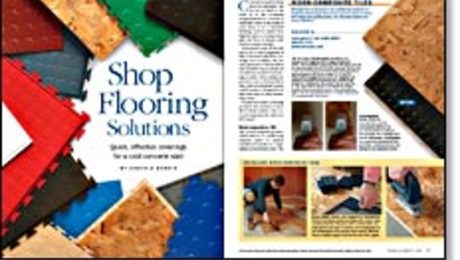 |
Shop Flooring SolutionsQuick, effective coverings for a cold concrete slab |
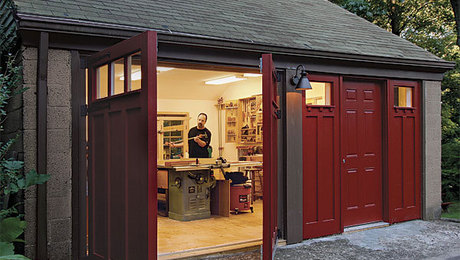 |
Turn Your Garage Into a Real WorkshopMake it comfortable and you’ll spend more time there |
Question 2:
From Kurt:
In STL episode 64 Mike’s tool bomb was a Carriage Makers Plane he had for about 10 years and never used.
- Does he still have this?
- Has he ever used it?
Question 3:
From Damon
I’ve converted my bench plane collection from vintage Stanley planes to all Veritas low angle planes. When I built my workbench, my understanding was that a woodworker who often uses bench planes would generally benefit from having a relatively lower bench, and I sized it accordingly. My Veritas planes have a more upright tote than the vintage Stanleys, so it seems like from an ergonomics perspective they might call for a relatively higher workbench height. What do you guys think? I can imagine Mike saying something like “just put some scrap wood under the legs to raise it up and see if you like it that way”, and I’ll probably do that. However, I think an interesting conversation could be had about how changing the tools we use (like my situation or even more so going from western saws/planes to Japanese-style) could benefit from other changes in our workshops to more effectively use them.
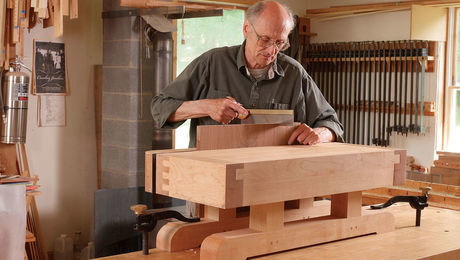 |
Tricks For Working at the Right HeightOptimize the elevation of your workbench for the task at hand |
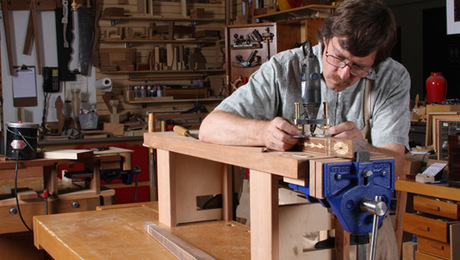 |
Mini Workbench Makes Detail Work EasierRaise detail work closer to eye level and make life in the shop that much easier |
Question 4:
From Sri:
I built Mike’s hayrake table a few years ago. Finally felt capable enough to tackle a chair (Kevin Rodel’s Arts and Crafts chair in white oak) to go with the table. First chair came out reasonably OK following Rodel’s plans and Mike Mascelli’s fantastic upholstery video series. Now I feel up to the challenge of making a full set of 6 chairs. I plan to make 2 chairs at a time (in case I screw up a step I don’t want to ruin all the chairs at once!). But to get over the drudgery of stock prep I wanted to prepare all the pieces to thickness and width for all 6 chairs over a couple of weekends. At my working pace and starting mid August it will probably be November before I get to the last pair. I am hoping Thanksgiving dinner will be while seated on the new chairs! Is there a downside to thicknessing to final size months in advance of the build? Almost all the joinery is mortise and tenon, including some slip tenons. There are a few half lapped dovetails for stretchers.
Question 5:
Question on using epoxy over PVA. Almost all articles on adhesives really only reference epoxy as a good gap filling option. The long open time is an obvious advantage and have heard makers such as Tim Rousseau mention it on the podcast. My questions is on glue ups, large or small, are the two mating surfaces on properly fitted joints (ie:m&t) staved of epoxy after assembly and squeeze out or is there enough remaining epoxy within the joint for a sufficient bond.
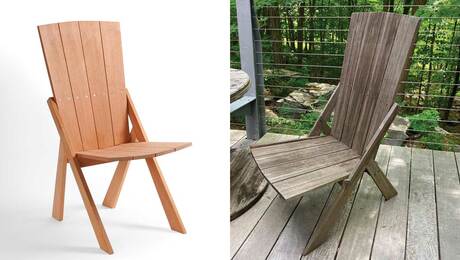 |
A Deck Chair Built to Withstand the ElementsTapers, curves, and angles converge in a sleek, durable outdoor chair. |
Every two weeks, a team of Fine Woodworking staffers answers questions from readers on Shop Talk Live, Fine Woodworking‘s biweekly podcast. Send your woodworking questions to shoptalk@taunton.com for consideration in the regular broadcast! Our continued existence relies upon listener support. So if you enjoy the show, be sure to leave us a five-star rating and maybe even a nice comment on our iTunes page.





















Comments
I’m super pumped to try Anissa’s peroxide trick! But would like to mention that CA glue should be a part of everyone’s first aid kit. I’ve had great success using it in conjunction with “Steri Strip” reinforced skin closures. It’s basically strips of packing tape. Thanks
Hey Ben - No alcohol or hydrogen peroxide on wounds!! They both significantly inhibit wound healing by damaging the tissues. Best is to just use room temperature water to flush wounds - and tap water is fine as most ER's now use, no need for sterile solutions. - Woodworker and Retired Physician.
I have hard rubber mats on my shop floor. They're called stall mats, but they must be something different than the stall mats discussed in the podcast because there was no challenge in picking them up and moving them. I certainly didn't need C clamps.
They have an alternating, raised hatched pattern which makes for excellent grip, but makes sweeping with a broom nearly impossible. Only plane shavings can be swept up. I have the rockler dust right floor sweep which is basically a floor vacuum head for a dust collector. It works GREAT. Highly recommend.
Did Anissa get all the dust out of the miter slot?
In response to Ben's comment about using alcohol or peroxide on cuts. There are better ways. Alcohol & peroxide kills the cells within the cut area, which inhibits healing. You will do better with washing with soap and water then rinse with a stream of tap water for several minutes.
Log in or create an account to post a comment.
Sign up Log in